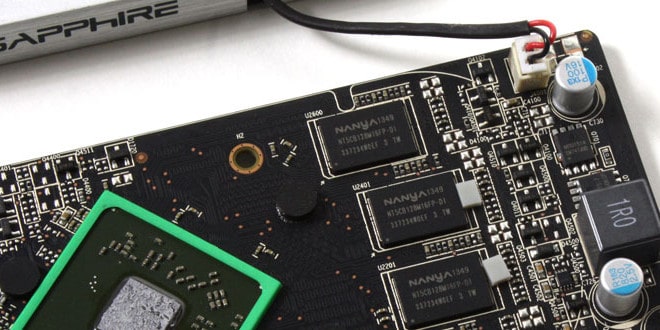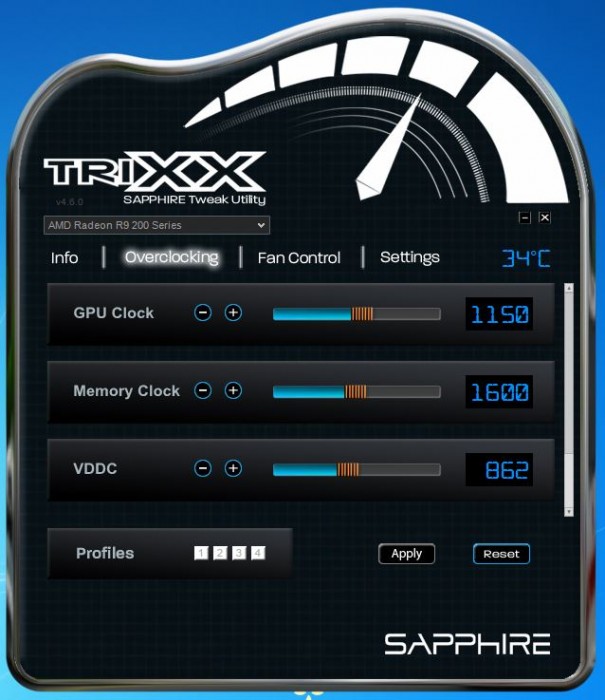Sapphire Radeon R7-240 Dual HDMI
Sapphire being the premier partner for AMD its only natural that they offer every one of AMDs offerings and maybe even some special tweaks to the lower end or more mainstream models available.
The card we are reviewing today happens to be one of those cards which is the R7-240 which is destined to be something like a stock replacement for an off the shelf PC. Sapphire did something pretty interesting here by equipping the card with dual HDMI connectors vs the standard connection array.
Key Features
Dual HDMI and Dual Audio
![]()
Sapphire supports top end 7.1 audio via the HDMI outputs on the R7-240 card, but what is very cool is that during my testing due to running dual HDMI displays with speakers I could actually play two different audio sources or videos from the single card and each with its own audio stream. This may seem silly as many will think “well how often do you watch two shows at once, but many seem to forget that cards like this are great for digital signage markets or even a multi office environment where different offices can have a different video/audio feed.
4k (Quad HD Support
Sapphire ensures full 4K support although I can only assume this is for video playback and not gaming as this card simply is not made for that kind of thing.
AMD Mantle Support
Sapphire fully pushed AMDs new Mantle technology which allows offloading of processing data to the CPU to increase graphical performance and although it is still a very young technology in BF4 we have seen some pretty impressive gains here.
Sapphire Trixx
Sapphire has its own overclocking software and has had it for awhile now called Trixx, while it is lesser known than those such as MSI’s Afterburner or EVGA’s Precision but it is still a capable tuning utility although its feature set is a bit lighter than some other offerings on the market.
Above you can see that the functionality is basic but the layout is super clean, I think with some time the features could be added to make this a great tuning utility.
Review Overview
Performance - 8
Value - 8.5
Quality - 9
Features - 8
Innovation - 9
8.5
The Sapphire R7-240 Dual HDMI is one potent mini card with a ton of overclocking potential, perfect for off the shelf system upgrades
 Bjorn3D.com Bjorn3d.com – Satisfying Your Daily Tech Cravings Since 1996
Bjorn3D.com Bjorn3d.com – Satisfying Your Daily Tech Cravings Since 1996












Kind of pretentious to consider today a lowly card hobbled on DDR3 to have a place in Ultra 1080p gaming. This is just a quick dual monitor upgrade card for a SFF. There are GDDR5 R7 240 units like the one Diamond has that would be more the “entry gaming” while in a half-height package. It has some oomph to permit 1080p when more judicious medium/no-AA settings are placed on it. Sure it not going to “wow” you but to even achieve 1080p in a SFF enclosure and only a 30W TDP is astounding.
“I have to wonder why Sapphire did not crank this up to begin with.” Because they’re constrained to stay within the 30W TDP.
I really see next time you do this type of card, forget all the other graphic cards you’ve notched on your grip. Cut it down a to say 4 cards all in this half-height package, price, and card in the past and perhaps currently fall into something approaching this TDP. Would be nice to see this against a 6570 DDR5 (60W), a GT 630 (65W) (hard if impossible to get as DDR5 half-height), and something stronger that can chronicle into a bunch of previous data like a 6670 GDDR5 (65W). Using that group gives a clear picture as to where we’ve been, and expectations today. All the synthetic test don’t indicate much of anything other than it’s way lower performance than, newer, more powerful and expensive gaming cards. Kind of figured that…
I agree with Ultra 1080p gaming, however I dont have a 1080p monitor just a 20 inch 720p monitor and I can play all games on high or ultra with at least 30fps at 1600×900. So for 50 bucks it was awesome for me.
i purchased this card based on this review and found the reviewer’s information to be totally incorrect. This card DOES NOT provide audio to both HDMI outputs at the same time according to the manufacturer.